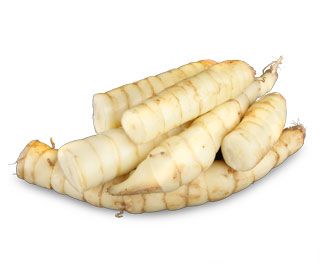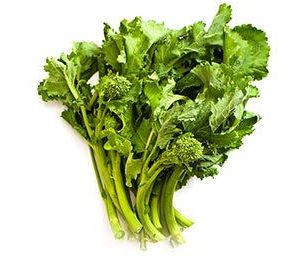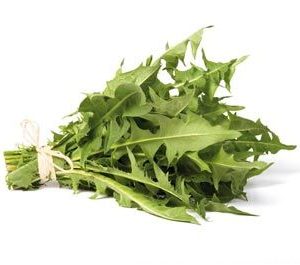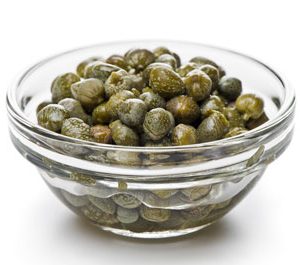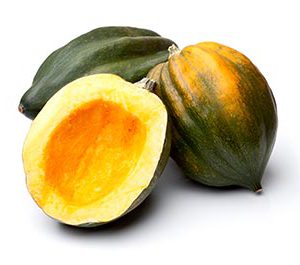What Is Arrowroot, and How Is It Used?
Arrowroot (Maranta arundinacea) is a tropical tuber native to Indonesia.
It’s usually processed into a powder, also called arrowroot flour. The powder is extracted from the plant’s rhizome, an underground stem with multiple roots that store its starch and energy.
This vegetable is mostly employed in the kitchen, as it works well in sweet and savory dishes alike, although it may have medicinal properties as well.
Aside from being high in protein and several nutrients, arrowroot is very easy to digest, making it ideal for children and older adults who may need gentler food.
This article reviews the nutrients, benefits, and uses of arrowroot.
Nutritional profile
Arrowroot is a starchy root vegetable similar to yam, cassava, sweet potato, and taro.
Like many starches, it’s high in carbs but offers various nutrients. A 1-cup (120-gram) serving of sliced, raw arrowroot contains the following:
- Calories: 78
- Carbs: 16 grams
- Fiber: 2 grams
- Protein: 5 grams
- Fat: 0 grams
- Folate: 102% of the Daily Value (DV)
- Phosphorus: 17% of the DV
- Iron: 15% of the DV
- Potassium: 11% of the DV
Arrowroot has a higher protein content than other tubers, packing 5 grams per 1 cup (120 grams), compared with 2.3 grams in the same amount of yam.
Additionally, it provides over 100% of the DV for folate (vitamin B9), which is essential for development during pregnancy and DNA formation. Low levels of this vitamin are associated with an increased risk of birth defects and chronic diseases like cancer.
What’s more, arrowroot offers significant amounts of phosphorus, iron, and potassium.
SUMMARY
Arrowroot is a starchy vegetable with a significant amount of protein and several minerals. It provides over 100% of the DV for folate.
Potential benefits of arrowroot
Historically, arrowroot has been used for its medicinal properties. Most of its potential health benefits are linked to its starch content and composition.
May aid weight loss
Arrowroot powder comprises 32% resistant starch, which your body cannot digest. It forms a viscous gel when mixed with water and behaves like soluble fiber in your gut.
Foods high in fiber and resistant starch slow your rate of digestion, giving you a prolonged feeling of fullness. In turn, this may regulate your appetite and lead to weight loss.
In a study in 20 adults, those who took supplements containing 1.5 ounces (48 grams) of resistant starch experienced a significantly lower calorie intake over the next 24 hours, compared with a control group.
Arrowroot’s protein content may aid feelings of fullness as well.
May fight diarrhea
Arrowroot may help treat diarrhea both by firming stool and helping you rehydrate.
Severe diarrhea may lead to fluid loss, dehydration, and even death — especially in vulnerable populations, such as children.
In a monthlong study, 11 people with diarrhea who took 2 teaspoons (10 mg) of arrowroot powder 3 times daily experienced less diarrhea and abdominal pain.
Arrowroot’s high starch content may be responsible, as it helps increase stool consistency and size. In turn, this reduces the frequency of your evacuations.
It may also help your body rehydrate to make up for the related fluid loss.
An animal study determined that arrowroot water, which is made by boiling arrowroot powder, decreased the rate of cholera-induced diarrhea more effectively than a rehydration solution developed by the World Health Organization (WHO).
Still, more research is needed.
Supports your immune system
Arrowroot’s resistant starch content may stimulate your immune system.
In fact, this tuber is a potential source of prebiotics, which are a type of fiber that feeds your gut bacteria.
Beneficial gut bacteria may boost your immune health, as they produce multiple vitamins and absorb key minerals that your immune system needs to function properly. What’s more, they may even influence how your body responds to many diseases.
A 14-day study in rats fed arrowroot powder resulted in considerably increased blood levels of immunoglobulins G, A, and M, which are various antibodies that protect you from harmful microorganisms.
Test-tube studies have revealed similar results. That said, more human research is needed.
Fits a gluten-free diet
Like most tubers, arrowroot is naturally gluten-free. Its powder can be used as a substitute for wheat flour.
Those who have celiac disease — a common digestive disorder in which gluten inflames your small intestine — need to completely avoid this protein. Grains like barley, wheat, and rye, as well as products made from them, contain gluten.
Intriguingly, arrowroot’s resistant starch is especially applicable for gluten-free products because it helps improve their texture, crispness, and flavor.
SUMMARY
Due to its high starch content, arrowroot may be suitable for gluten-free diets, promote weight loss, help treat diarrhea, and strengthen your immune system.
Uses for arrowroot
Though you can cook the root itself, arrowroot is more frequently consumed as a powder.
It’s used as a thickening agent for sauces, puddings, and jellies, as well as an ingredient in baked goods like cookies and cakes. Additionally, it’s a popular replacement for wheat flour in gluten-free recipes.
It may have several cosmetic applications due to its alleged oil-absorbing capacity, though they are not necessarily supported by scientific evidence. All the same, some popular uses include:
- Dry shampoo. Massage arrowroot powder into your scalp to refresh your hair without water.
- Deodorant ingredient. Mix equal parts arrowroot powder, coconut oil, and baking soda for a homemade deodorant.
- Talcum and baby powder substitute. On its own, this powder is said to absorb moisture and increase smoothness.
- Homemade makeup. Mix arrowroot powder with 1) cinnamon and nutmeg to make face powder or foundation, 2) beetroot powder for blush, or 3) cocoa powder for bronzer.
SUMMARY
Arrowroot powder is frequently used as a thickening agent in foods or a gluten-free replacement for wheat flour. Though it’s also added to homemade cosmetics, scientific research on these applications is lacking.
Substitutes for arrowroot powder
If you run out of arrowroot powder, you can try one of these viable substitutes — all of which are gluten-free:
- Cornstarch. This common ingredient can be used for both culinary and cosmetic purposes. Add 1 tablespoon (8 grams) of cornstarch for every 2 teaspoons (5 grams) of arrowroot.
- Tapioca flour. This popular gluten-free flour is similar in flavor to arrowroot. For every 1 teaspoon (2.5 grams) of arrowroot, use 1 tablespoon (8 grams) of tapioca flour.
- Potato starch. Arrowroot and potato starch contain similar amounts of amylose, a starch compound that acts as a thickener. Use 1 teaspoon (2.5 grams) of potato starch for every 2 teaspoons (5 grams) of arrowroot.
- Rice flour. Arrowroot and rice flour have very similar carb contents, but rice flour is higher in starch. When swapping it with arrowroot, use only half as much.
SUMMARY
Many gluten-free flours and starches, including tapioca and rice flours, make perfect substitutes for arrowroot.
The bottom line
Arrowroot is a root vegetable often sold as a powder. It’s used as a thickening agent and gluten-free flour.
Many of its health benefits are associated with its starch content, which may promote weight loss, treat diarrhea, and stimulate your immune system.
In addition to its culinary and medicinal uses, arrowroot is used for cosmetic purposes.

